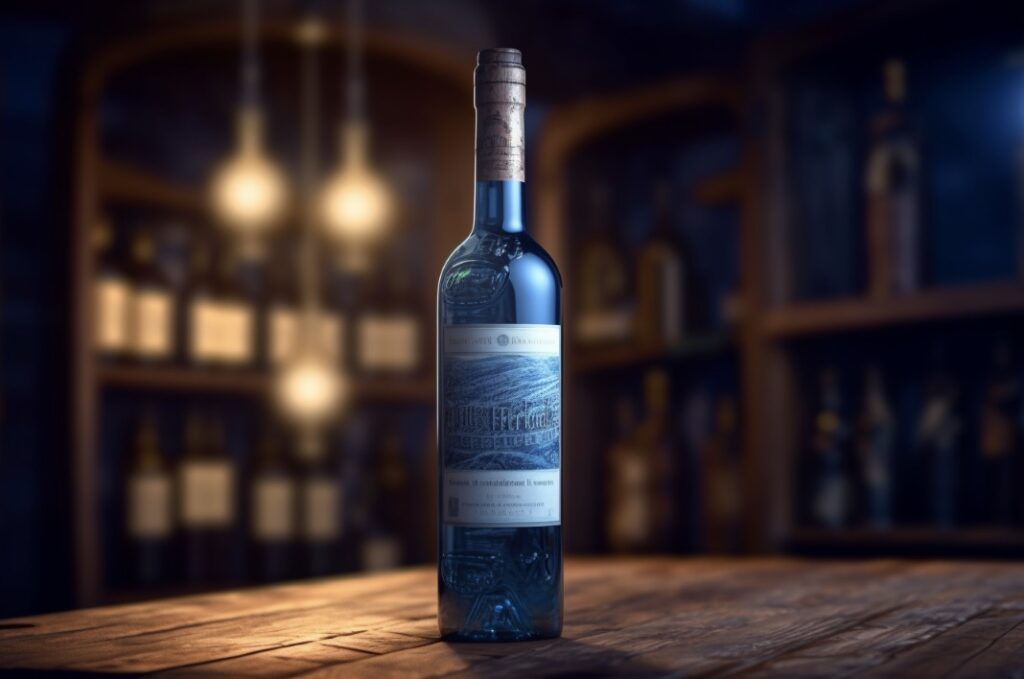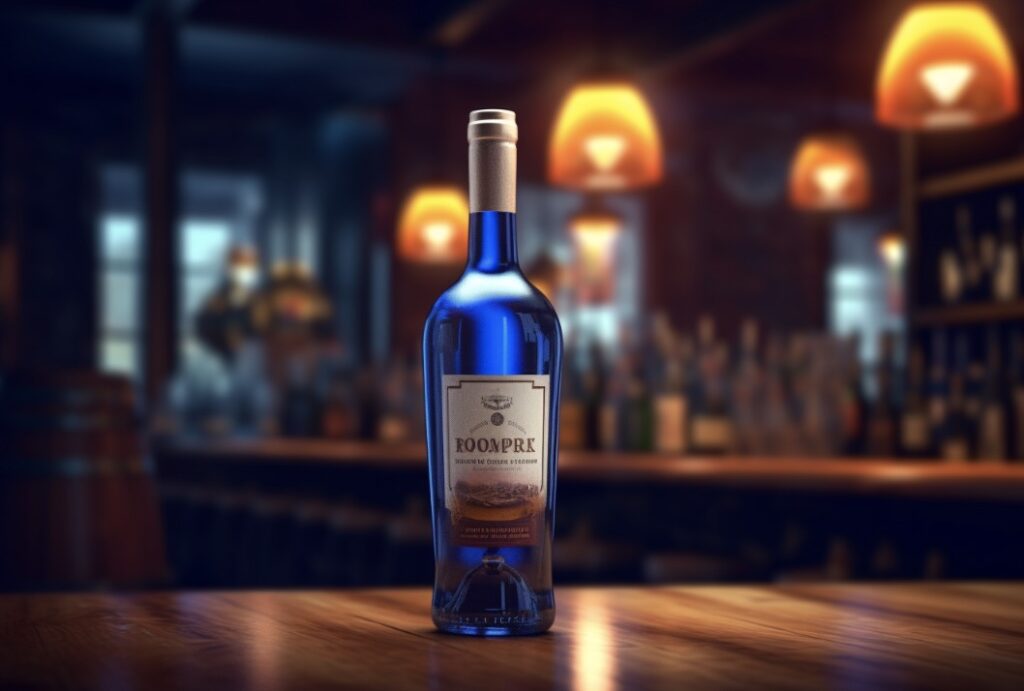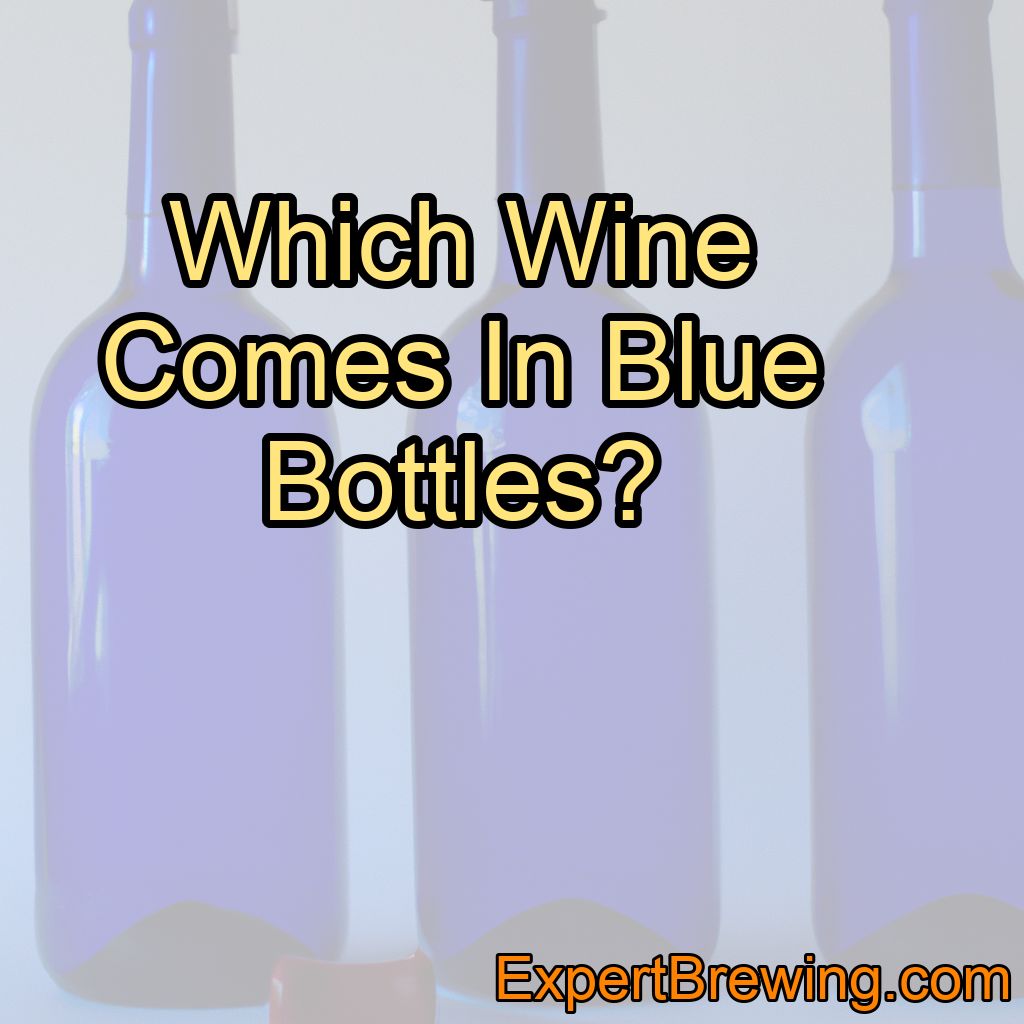Wine bottles come in many different shapes, sizes, and colors. The color of the bottle can be an important factor for both the aesthetics and the preservation of the wine. One of the more unique and eye-catching colors for a wine bottle is blue. This raises the question: which wine comes in blue bottles?
The wine that comes in blue bottles is predominantly German Riesling, specifically from the Mosel wine region. However, there are a few other types of wine that can be found in blue bottles, such as blue sparkling wines and some dessert wines.
In this blog post, we will delve deeper into the topic of blue wine bottles, exploring their origins, the wines they contain, and the benefits of using blue glass. Along the way, I’ll share some personal experiences with blue bottled wines and provide recommendations for those who want to try them.
1. The Origins of Blue Wine Bottles
Blue wine bottles have been around for centuries, with their first known use being in the 1700s. The reason for the blue color was initially practical rather than aesthetic. Glassblowers in Germany began using cobalt oxide to color their glass, which resulted in a deep blue hue.

The bottles became popular in the Mosel wine region of Germany, where they were primarily used for Riesling wines.
As a wine enthusiast and brewer, I’ve always been intrigued by the history of wine bottles and their various colors. The use of cobalt oxide to create blue bottles is a fascinating example of how practicality and beauty can intersect in the world of wine.
2. German Riesling: The Classic Blue Bottled Wine
As mentioned earlier, German Riesling is the most common wine found in blue bottles. Riesling is a white grape variety that originated in the Rhine region of Germany. It is known for its floral aroma, high acidity, and versatility in terms of sweetness levels.
Riesling wines can range from bone-dry to lusciously sweet, making them a popular choice for many wine enthusiasts.
When I first tried a Mosel Riesling in a blue bottle, I was immediately captivated by the wine’s bright, refreshing acidity and delicate fruit flavors. The blue bottle added an extra level of charm and intrigue to the experience, making it a memorable tasting.
3. Blue Sparkling Wines
Another type of wine that can be found in blue bottles is blue sparkling wine. These wines are made using a combination of white grapes and a natural pigment called anthocyanin, which is found in the skin of red grapes. The result is a unique, vibrant blue color that is both visually striking and delicious to drink.
I’ve had the pleasure of trying a few blue sparkling wines, and they always make for a fun and engaging conversation starter. The taste is often crisp and fruity, with a touch of sweetness that makes them perfect for celebrations and special occasions.
4. Dessert Wines in Blue Bottles
While less common than German Riesling and blue sparkling wines, some dessert wines can also be found in blue bottles. These wines tend to be sweet and luscious, with the blue glass serving as a beautiful contrast to the rich, golden color of the wine.

One evening, I was lucky enough to indulge in a Hungarian Tokaji Aszú dessert wine that was housed in a stunning blue bottle. The experience was truly unforgettable, as the intense flavors of honey, apricot, and spice were only enhanced by the extraordinary presentation.
5. The Benefits of Blue Glass for Wine
Beyond the aesthetic appeal, there are some practical benefits to using blue glass for wine bottles. One of the main reasons is that blue glass can help protect the wine from harmful UV light.
Exposure to UV light can cause wine to age prematurely or develop off-flavors, so the blue glass serves as a protective barrier.
In my experience as a brewer, I’ve found that using colored glass can greatly enhance the longevity and quality of a wine. It’s always a pleasure to open a well-preserved bottle and enjoy the fruits of our labor.
6. Collectibility and Presentation
Blue wine bottles have become something of a collector’s item for some wine enthusiasts. The unique color and history behind the bottles make them an interesting addition to any wine collection. They also make for a striking presentation when given as a gift or displayed on a dinner table.
As a collector myself, I can attest to the allure of blue wine bottles. They add a touch of elegance and intrigue to my collection and never fail to provoke curiosity and admiration from fellow wine lovers.
7. How to Choose the Right Blue Bottled Wine
When selecting a blue bottled wine, it’s essential to consider the type of wine you enjoy and the occasion for which you’re purchasing the wine. For a refreshing and versatile option, German Riesling is always a safe bet. If you’re looking for something more unique and celebratory, a blue sparkling wine might be the perfect choice. And for those with a sweet tooth, a dessert wine in a blue bottle is sure to impress.
As with any wine, it’s essential to do some research and read reviews to ensure you’re purchasing a quality product. Trust your palate, and don’t be afraid to explore new and exciting blue bottled wines.
8. My Personal Recommendations
As a seasoned wine lover and brewer, I have had the pleasure of tasting many blue bottled wines. Here are a few of my personal recommendations for those looking to explore this unique category of wine:
- Dr. Loosen Blue Slate Riesling Kabinett: A classic Mosel Riesling with bright acidity, delicate fruit flavors, and a touch of sweetness.
- Blanc de Bleu Cuvée Mousseux: A crisp, fruity blue sparkling wine that’s perfect for celebrations.
- Royal Tokaji Blue Label 5 Puttonyos Aszú: A luscious dessert wine with intense flavors of honey, apricot, and spice.
9. Conclusion and Fun Facts
In conclusion, the wine that comes in blue bottles is predominantly German Riesling, with blue sparkling wines and some dessert wines also occasionally found in blue bottles.
The use of blue glass has a fascinating history rooted in practicality, and it offers benefits for the preservation and presentation of the wine.
To wrap up, here are 10 fun facts about blue bottled wines:
1. Blue wine bottles originated in Germany in the 1700s.
2. Cobalt oxide was used to create the blue color in the glass.
3. The Mosel wine region of Germany is known for using blue bottles for their Riesling wines.
4. Blue glass can help protect wine from harmful UV light.
5. Blue sparkling wines are made using a natural pigment called anthocyanin.
6. Some dessert wines, such as Hungarian Tokaji Aszú, can be found in blue bottles.
7. Blue wine bottles have become a collector’s item for some wine enthusiasts.
8. The blue color of the bottle can enhance the presentation of the wine.
9. When choosing a blue bottled wine, consider your taste preferences and the occasion for which you’re purchasing the wine.
10. Some recommended blue bottled wines include Dr. Loosen Blue Slate Riesling Kabinett, Blanc de Bleu Cuvée Mousseux, and Royal Tokaji Blue Label 5 Puttonyos Aszú.
FAQs
Why is Riesling in blue bottles?
Riesling is not necessarily always in blue bottles. However, some producers choose to use blue bottles as they offer better protection against UV light, which can negatively affect the wine’s flavor and aroma.
Why does Riesling come in a tall bottle?
Riesling often comes in a tall bottle because it is a traditional bottle shape for wines from the Germanic regions where Riesling is commonly grown. The tall, slender shape is believed to help preserve the wine’s delicate aromas and flavors. Additionally, the shape allows for easy pouring and handling of the bottle.
What are the 5 colors of wine?
The five basic colors of wine are red, white, rosé, orange, and pink.
What color are Riesling wine bottles?
Riesling wine bottles can come in a variety of colors, including clear, green, and brown. However, green is the most common color for Riesling bottles.
What colors do wine bottles come in?
Wine bottles come in a variety of colors, including clear, green, brown, and even blue. The color of the bottle can affect the wine’s aging process and protect it from light damage.
What is the best color for wine bottles?
There is no best color for wine bottles as it ultimately depends on the type of wine and the intended purpose. However, dark green and amber bottles are commonly used for wines that are sensitive to light and require protection from UV rays, while clear bottles are often used for white wines and rosés to showcase their color.




